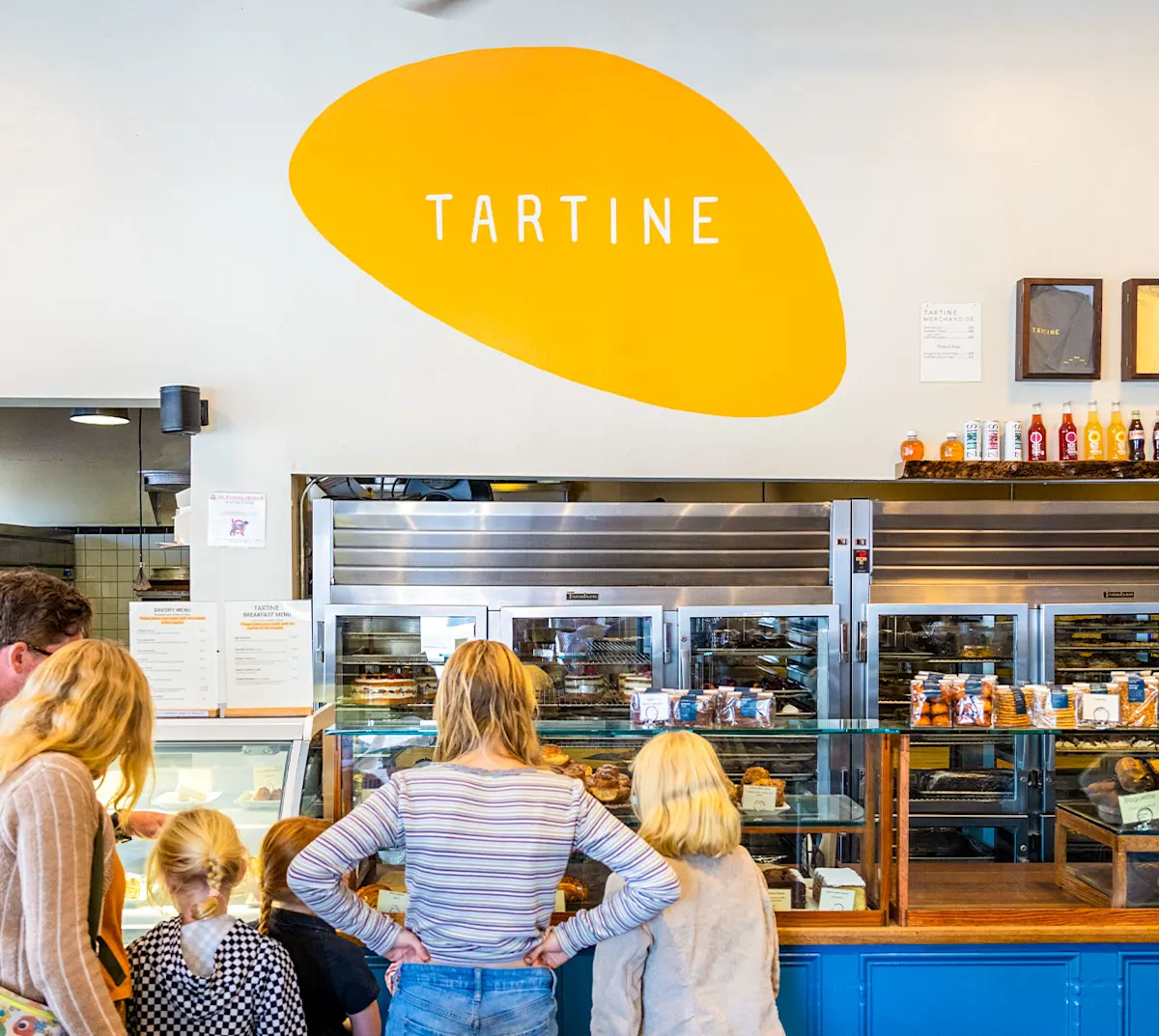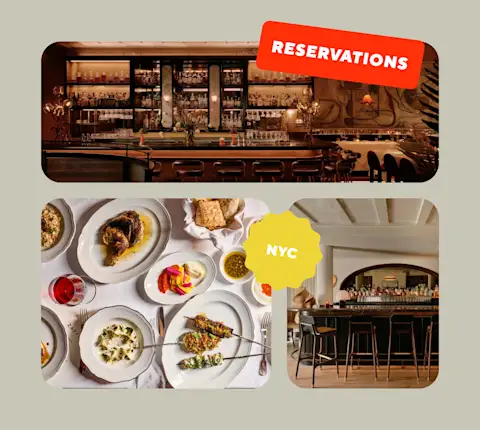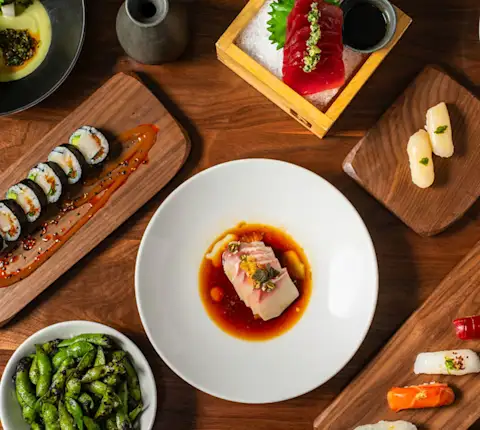*This article includes mentions of merchants who are partners of DoorDash, and DoorDash may receive a commission if you choose to make a purchase from these merchants. For Summer of DashPass, Tartine’s Guerrero St. location will feature a special deal for DashPass members only. Spend $35, Get a Bag of Chocolate Chip Walnut Cookies from 7/11-7/17! Terms and conditions apply.*
During a recent visit to a Los Angeles outpost of San Francisco-based Tartine Bakery, a well-known pastry chef became captivated and also flummoxed by the bakery’s pain au chocolat. The sweet-centered croissant was notably exceptional, but he couldn’t put his finger — er, taste buds — on just what made it that much more flaky-buttery-chocolatey fabulous than those at other top-notch bakeries using textbook techniques. It turns out the reason for Tartine’s pastry success is not a single hidden formula, but a philosophy and approach to baking that elevates everything they make at all of their locations.
Order from TartineThe apex chocolate croissant tells the story. When that perplexed pastry chef asked Anna St. John, Tartine’s pastry chef since 2018, for the secret behind its allure, he quickly discovered there is none. With six cookbooks revealing their baking processes, hundreds of past and present baking employees with recipe knowledge, and techniques now shared between their three San Francisco (the original Gurrero location, Inner Sunset, and Tartine Manufactory) and six Los Angeles locations (Santa Monica, Sycamore, West Adams, Silverlake, Pasadena, and brand new Venice), there’s no shroud of confidentiality behind the goings-on of this famous, ever-growing bakery born in San Francisco’s Mission District in 2002.

But there are reasons for the elevated pastry experience — and for why it extends to all of their locations: their croissants, along with all Tartine’s other offerings, are direct responses to the three perennial questions that guide Tartine bakers and the business as a whole: What if we found what worked by continuing to look for what might? What if a bakery kept its heart and soul but always remained open to new ideas? What if a strong sense of place could successfully go more places?
Ingredients? Only the Crème de la Crème

To create their chocolate croissant, Tartine bakers follow traditional French techniques and use France’s premier-cru-level Isigny butter, a brand with rich, creamy flavor and a higher butterfat content than most American brands. But they push the baking time past the expected: “We bake everything pretty hard because so much flavor is in that caramelization that happens on the outside of that loaf of bread or a toasty croissant that’s simultaneously gold and crisp and soft. What other bakeries might consider ‘too dark’ we call ‘Tartine dark,’” explains Anna. For the whole company, “Tartine dark” is always the goal.
Then there’s the flour. About as far from the mass-produced dust in most kitchens, Tartine uses small-batch varieties from Cairnspring Mill, a boutique, family-run craft flour company out of Skagit Valley, Washington. They have such an intimate relationship with the fresh, flavorful flours and the company that makes them, there’s ongoing banter between farmer/miller-owner Kevin Morse and the pastry chefs about how specific lots perform and how to coax the best out of them; like wines from different vintages, batches of craft flour vary.
Finally, the chocolate. It’s easy enough to follow the standard of folding croissant dough around high-quality, ready-made chocolate batons to ensure a soft chocolate center after baking. But somewhere along the way, the Tartine team decided they wanted a richer chocolate experience, so they negotiated with their purveyor, premium French chocolate manufacturer Valrhona, to create a specially formulated chocolate baton with 66 percent chocolate rather than the usual 48 percent. If you, like the aforementioned perplexed baker, ever wondered why Tartine’s chocolate croissant tastes better and more chocolatey, now you know.
Commitment to the Craft

The kick-ass pain au chocolat is just the start. Consistency, the company’s attention to detail, and commitment to quality ingredients and craft are layered into everything they produce at all their locations.
Two commissary kitchens — one in LA and one in San Francisco — mix and prep all the sweet and savory products by hand to ensure the use of quality ingredients and precise technique. Anna explains: “Every loaf of bread is hand mixed, hand divided, shaped by hand, and baked by a person. There’s no moment when someone is not personally influencing this product, both in the grocery store and in the bakery.”
Another quality control move is that many products are baked on-premise by a well-trained baking staff; a shared understanding of the desired outcome guarantees a fresh neighborhood bakery experience at every storefront. “We use every sense to know when things are done; that’s the craft,” Anna explains. She points to the slapping sound of the bread dough on the side of a mixing bowl, the look and smell that indicates “Tartine dark” doneness, and the breaking, popping sound of bread when it’s fresh from the oven as just a few examples of the intimate communications that cannot be achieved through automation. It’s this combination of shared knowledge, experience, and ongoing interaction with their products that makes the difference.
Recipe, Bake, Repeat

For this reason, no matter which location you grab their morning bun — their most popular menu item, selling thousands per day throughout California — you’ll be treated to the pinnacle of breakfast pastry perfection: made from croissant dough, its crisp-flaky, organic-sugar-dusted exterior and soft, moist inner layers echo with harmonious flavors of cinnamon, orange zest, and balanced sugar. Similarly, their naturally leavened sourdough Country Loaf tastes as iconic right off the shelf — or as a base for legendary smoked salmon tartine and other sandwiches — in San Francisco as it does in Venice Beach.
Since all locations feature carefully curated produce from highly regarded California farms like Frog Hollow, Swanton Berry Farm, and Blossom Bluff Orchards, there’s even statewide collaboration on seasonal changes like the switch from spring’s savory scone – a moist, dense triangle flavored with bacon, chive, Gruyere, and fromage blanc — to summer’s version flecked with fresh corn, pickled Fresno chiles, white cheddar, and chive. Grab one in San Francisco on your way to SoCal and you can satisfy any craving for a second one once you hit the LA city limits.
Whether or not Tartine co-founders/co-owners Elisabeth Pruiett and Chad Robertson had pastry domination in mind when they opened their first location in San Francisco more than 20 years ago, their team’s ongoing commitment to excellence is more than the icing on their luscious tres leches cake. It’s how they’re able to successfully bring their strong sense of place to more places, much to the delight of pastry lovers everywhere.
Order from Tartine*Valid only at participating Tartine - Guerrero locations. Fees (including service fee), taxes, and gratuity still apply. Terms apply. Orders must have a minimum subtotal of $35, excluding taxes and fees. Offer valid on 7/11/24 - 7/17/24 or while supplies last. Must be an active DashPass subscriber. Must have or create a valid DoorDash account with a valid form of accepted payment on file. No cash value. Non transferable. See full terms and conditions at https://help.doordash.com/consumers/s/article/offer-terms-conditions .






